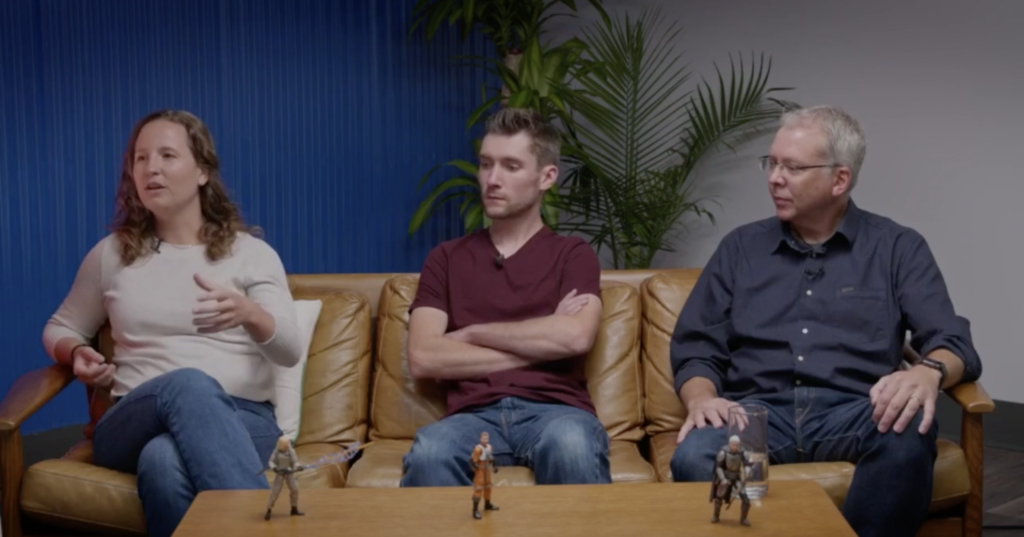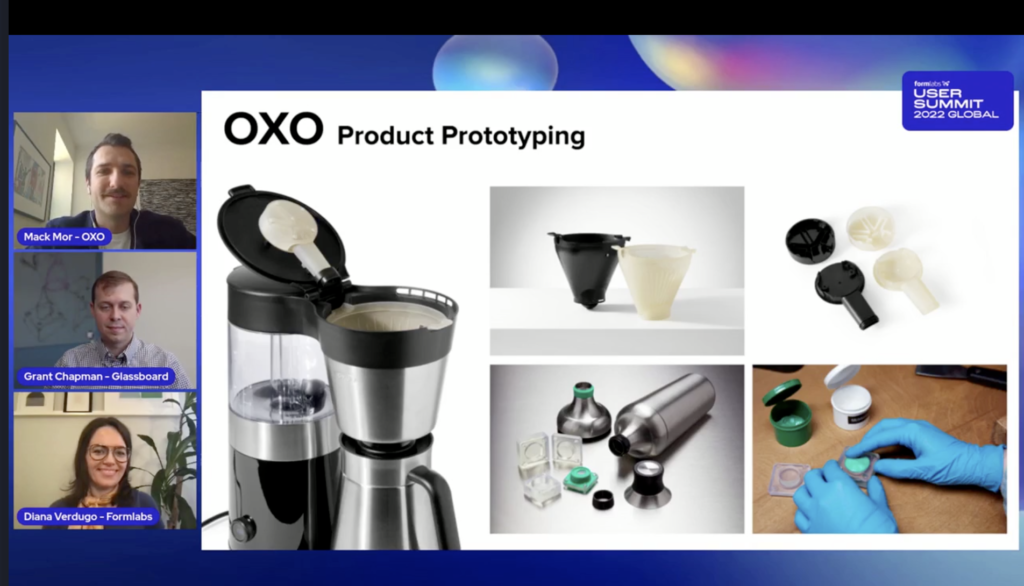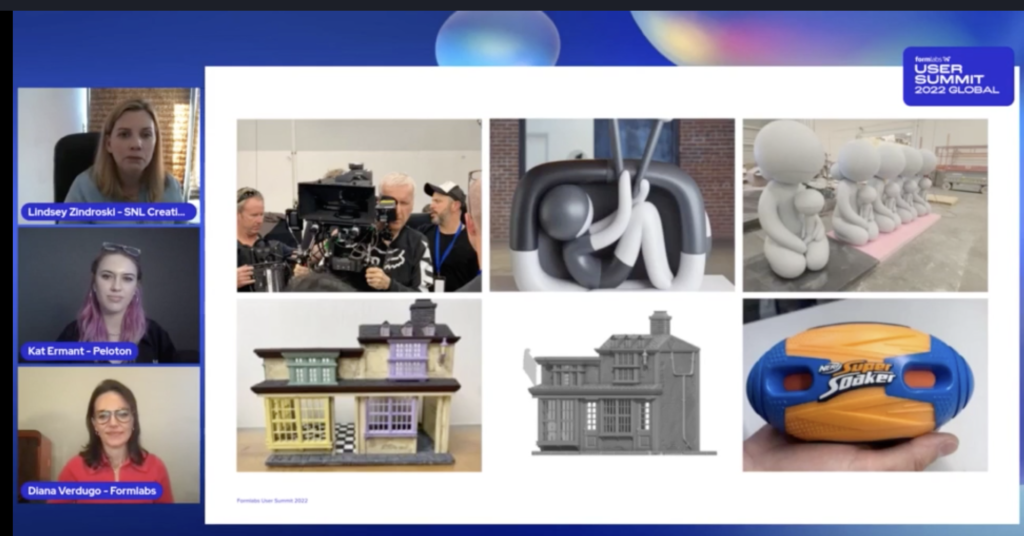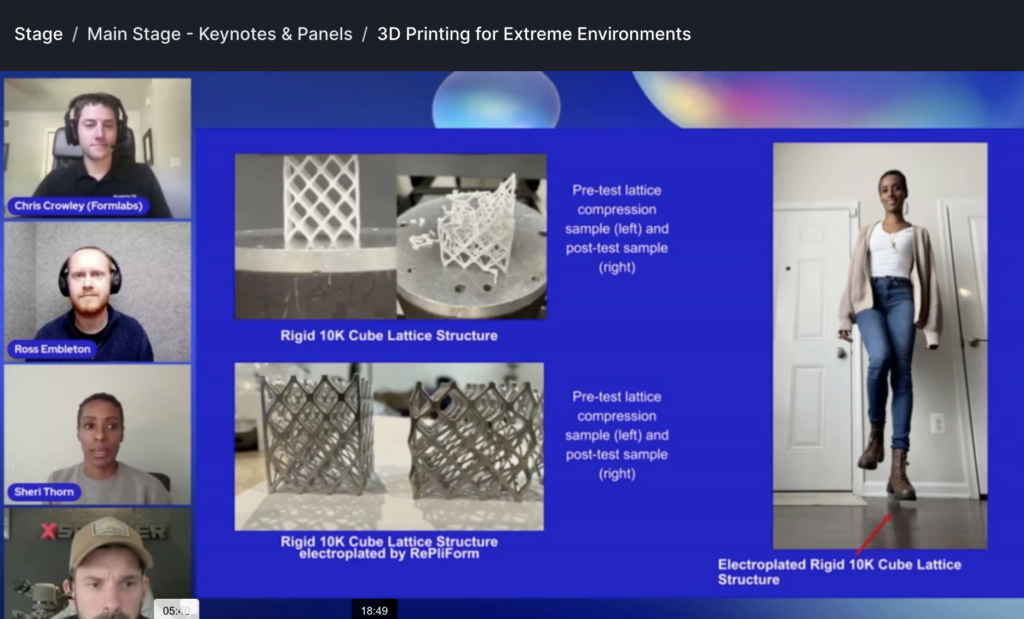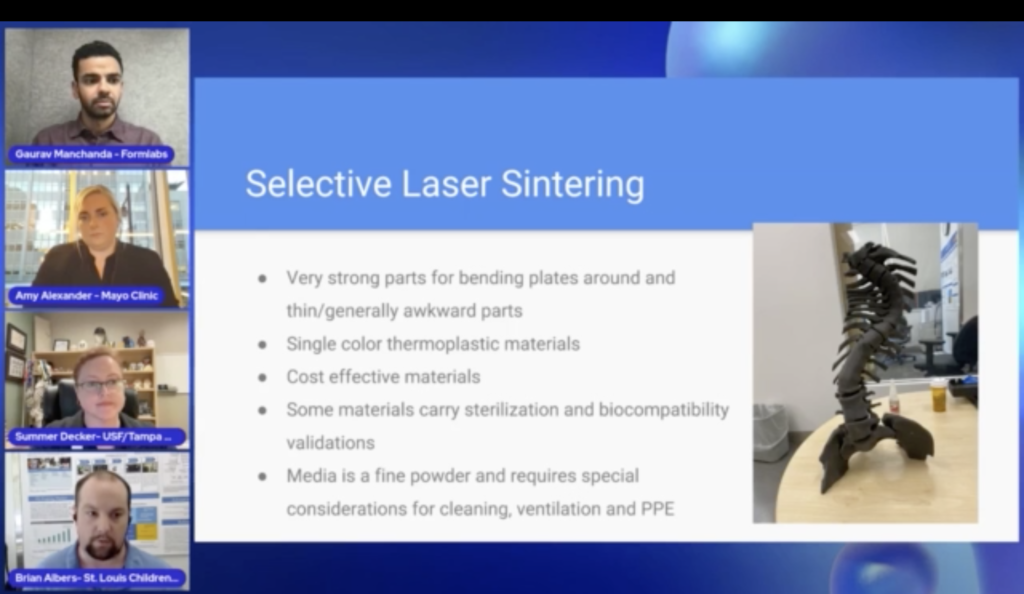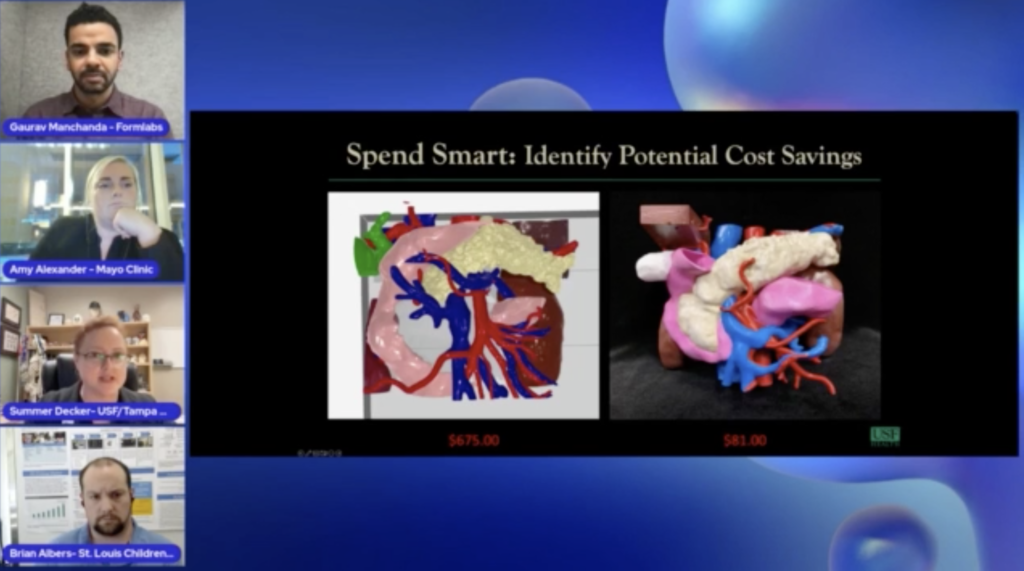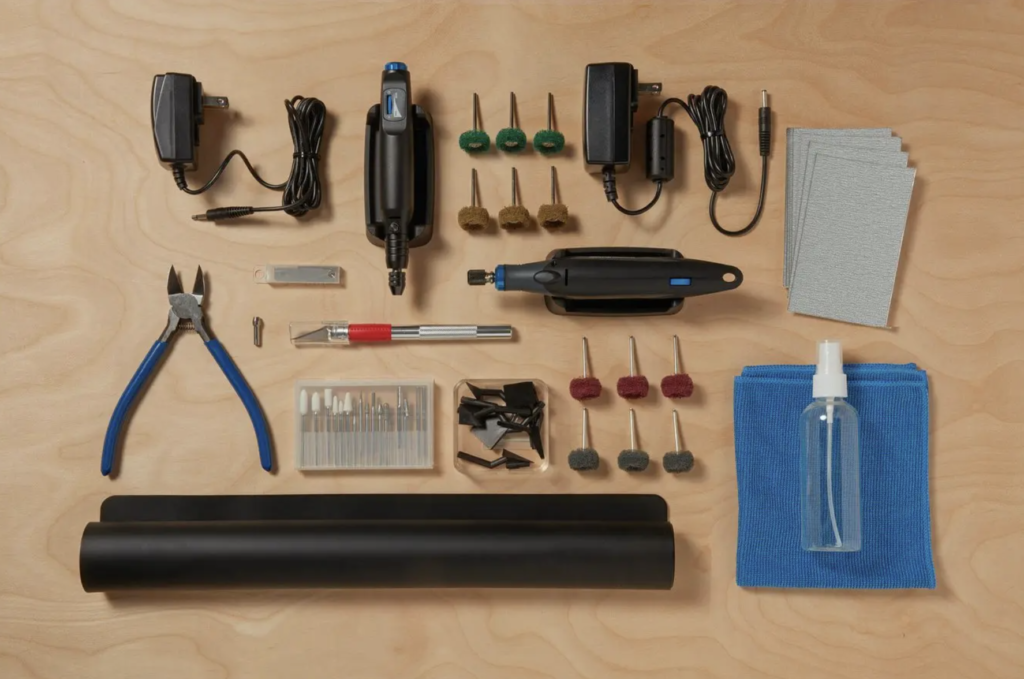Formlabs’ annual User Summit kicked off October 26th and 27th. The online event highlights power users who utilize Formlabs printers throughout many companies and organizations—including Peloton, OXO, Hasbro, Nasa—from across a variety of sectors and industries, ranging from dental and consumer goods to healthcare, and more. Whether you’re a Formlabs veteran or new to the technology, you’d likely benefit from Formlabs University, which features live videos on how to use various Formlabs products and materials. In addition, the 3D printer manufacturer announced its new post-processing kit, Formlabs Finishing Tools. As a Formlabs power-user who has been using Formlabs printers from the Form 2, 3, 3+, and 3L for over half a decade, I was excited to tune into this year’s event.
Custom Action Figures with Formlabs 3D Printing
Following the keynote, featuring Formlabs CEO Max Lobovsky and former Formlabs employee Shane Wighton, of the popular Youtube channel Stuff Made Here, was a major highlight of the User Summit: the “Hasbro Mass Customization is Here: Become Your Own Superhero with Hasbro” panel. Recently, Formlabs and Hasbro collaborated to create the Hasbro’s Selfie Series, wherein users can scan themselves using a smartphone to get a customized action figure featuring their own faces, 3D printed using Formlabs technology.
The Hasbro team emphasized that it wanted a fully diverse range of skin and hair colors in order to be inclusive and representative of its customers. Personally, as someone who grew up unable to find action figures and dolls that looked like myself, I was impressed and happy with Hasbro’s emphasis on these initiatives. I was also really impressed with the quality and detail of the 3D prints. From seeing custom 3D printed action figures a decade ago on Shark Tank to witnessing this new product, it was obvious that the quality of 3D printed action figures has come a long way.
Speeding up Design with Formlabs 3D Printers
A common theme throughout the Summit was that many Formlabs printers were used for rapid prototyping products for consumer goods. Formlabs Partnerships + Community Lead Diana interviewed Mack Mor, Principal Engineer at OXO, and Grant Chapman, CEO of Glassboard Product Development. Chapman discussed how 3D printing has been at the core of cutting iteration time to make tooling for prototyping in a wide variety of materials and shapes.
Mor discussed how OXO relies on 3D printing to realize the firm’s designs as early as possible. The company uses Formlabs in different sectors by either quickly iterating, comparing, and refining designs or as a means of exploring future tweaks to products after they’ve already been brought to market.
Women in 3D Printing
Another event highlight was the Women in 3D Printing panel, moderated by Verdugo and featuring Women in 3D Printing Ambassadors Kat Ermant, Lead Prototype Tech at Peloton, and Lindsey Zindroski, CEO of SNL Creative. The panel discussed the disparity of women in the additive manufacturing industry, who make up just 13 percent of the industry and own only 11 percent of businesses.
When asked why it’s important to have different viewpoints in professional settings, Ermant explained, “We live one life with our one viewpoint with that one set of experiences, and on the other side is everyone else, and their circle of thoughts and experiences and stories that their telling. If you’ve never experienced their stories, then you never know what they know. So, it’s important to share a crossover because then you can double up on the experiences that you’re having.”
Zindroski discussed how she works hard to provide women with opportunities in her company and to create an environment where women feel empowered and important. She believes that it’s an accomplishment to say hers is a woman-owned business where everyone can succeed and thrive in the industry.
3D Printing in Extreme Environments
The “3D Printing in Extreme Environments” panel featured Sheri Thorn, Aerospace Engineer at NASA; Ross Embleton, Head of Research and Development at Heliguy; and Matthias Maehler, Manager Director of XSPECTER; moderated by Chris Crowley of Formlabs. When asked what considerations there are for space applications, Thorn explained NASA engineers have to take into account such effects as breaking gravity to get to space, vibrations of the spacecraft, extreme temperatures, gamma rays, and more. She noted that NASA uses Formlabs’ Rigid 10K resin and then electroplates it. After performing a compression test, the non-electroplated counterpart broke at 160lbs, while the electroplated versions withstood up to 2,500lbs of pressure.
For Maehler’s part, he has to consider a broad range of outdoor environments, including rain and snow, and the vibrations that occur, which require parts to be as stable as possible. To deal with this, Maehler uses Formlabs’ Durable resin to create gearsets.
Embleton explained that 3D printing is imperative in the drone industry, and if you aren’t utilizing it, you’re already behind. He uses Formlabs Fuse 1 with Nylon 12 material.
Medical 3D Printing with Formlabs
A highlight at the Healthcare Mainstage was a panel dubbed “Planning and Considerations for Building a Medical 3D Printing Lab,” which featured Amy Alexander of Mayo Clinic, Brian Albers of St. Louis Children’s Hospital, and Summer Decker of USF/Tampa General Hospital; moderated by Gaurav Manchanda of Formlabs.
Albers went into some of the use cases with 3D printing in a hospital lab, explaining that doctors use the technology to better understand what they’re working with. He elaborated that adopting the Formlabs’ Fuse 1 brought down price points and created stronger parts when compared to the PolyJet prints previously used by the hospital. Albers outlined considerations that need to be taken when building these labs, for example, keeping IPA and other chemicals in cabinets that need to be fireproof, maintaining ventilation for safety, etc.
Decker mentioned the importance of funding, spending wisely, and being an advocate for one’s given field. She explained how a lab could use PolyJet prints, but that printing the same models on a Formlabs printer and painting them was extremely cost saving. It also helped her team become a lot more successful in a variety of endeavors because they were able to get creative when they didn’t have the funding.
Alexander discussed the different sectors of how 3D printing is used at Mayo Clinic, including patient education, surgical planning, trainee education, and VR task training. Outlining the key elements for success, Alexander mentioned building and maintaining relationships with leadership members and the importance of not giving up.
Formlabs Finishing Tools
In addition to a number of informative panels, Formlabs announced its new post-processing kit, Formlabs Finishing Tools. Primarily for Formlabs SLA printers, the collection comes with tools to ease and streamline the post-processing workflow, including robust flush cutters, an exchangeable blade hobby knife, a rotary tool with a bit kit, including polishing bits, a silicone mat, and a microfiber cloth.
Speaking from my experience working in the fashion industry as a 3D printer and 3D technical designer, I think this is a great addition to the Formlabs accessories library. I utilize Formlabs printers to deliver realistic prototypes, many of which need to be worn by models. I’ve often had to use external equipment and sanding tools to ensure the prototypes were wearable, which meant spending additional time sanding away leftover support marks and bumps. Using Formlabs’ new kit would ultimately reduce the need for outside tools, which is costly. Additionally, it’s nice to have all post-processing tools in one place.
This year’s Summit was a blast. I appreciated that, for the most part, you didn’t need a 3D printing background to follow along, which is great if you’re new to Formlabs or 3D printing. It was also nice that many panels discussed external factors that might not be commonly known in the additive manufacturing sector, from starting a 3D printing lab to how 3D printing is used in education, etc. As a Formlabs user for over five years, I enjoyed learning how 3D printing was used in the aerospace industry and how Formlabs prints made it to the International Space Station. I believe it’s worth checking out the replays to gain insight into the industry and to find your next use case if you’re considering investing in a Formlabs printer.
Subscribe to Our Email Newsletter
Stay up-to-date on all the latest news from the 3D printing industry and receive information and offers from third party vendors.
You May Also Like
3D Printing News Briefs, April 13, 2024: Robotics, Orthotics, & Hypersonics
In 3D Printing News Briefs today, we’re focusing first on robotics, as Carnegie Mellon University’s new Robotics Innovation Center will house several community outreach programs, and Ugogo3D is now working...
Rail Giant Alstom Saves $15M with 3D Printing Automation Software 3D Spark
3D Spark has entered into a three-year deal with the rail giant Alstom. Alstom, a transport behemoth with annual revenues of $16 billion, specializes in the manufacture of trains, trams,...
Meltio Expands Global Reach with New Partnerships in the Americas and Europe
Spanish 3D printing manufacturer Meltio has expanded its sales network across the globe. With the addition of three new partners in the United States, Brazil, Argentina, and Italy, Meltio aims...
3D Printing Webinar and Event Roundup: April 7, 2024
Webinars and events in the 3D printing industry are picking back up this week! Sea-Air-Space is coming to Maryland, and SAE International is sponsoring a 3D Systems webinar about 3D...



